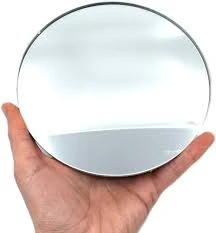

The Magic of Transition Glass That Transforms from Clear to Frosted
In the realm of modern design and innovation, few materials have captured the imagination quite like glass. It is a medium that embodies transparency and fragility while offering endless possibilities for creativity. Among the many advancements in this field, the emergence of glass that transitions from clear to frosted presents a captivating blend of aesthetics and functionality. This transformative technology not only revolutionizes architectural design but also enhances our daily lives in various ways.
At its core, the clear-to-frosted glass operates on the principles of electrochromic or photochromic technology. This remarkable glass can change its opacity in response to external stimuli, such as an applied electrical charge or UV light. The result? A seamless transition from a pristine, transparent state to a smooth, opaque finish that diffuses light beautifully. This feature provides architects and designers with new dimensions to explore, fundamentally altering how spaces are utilized and perceived.
Aesthetic Versatility
One of the most striking advantages of clear-to-frosted glass is its aesthetic versatility. In homes, it can be employed in a range of applications, from shower doors to room dividers. When clear, it allows for an open and airy feel, making spaces appear larger and more connected. Conversely, when frosted, it offers privacy and intimacy, perfect for bedrooms or bathrooms. The ability to switch between states means homeowners can customize their living spaces according to their mood or needs without the hassle of physical alterations.
In commercial settings, this glass can be equally powerful. Retail environments benefit greatly from its use, as it can create dynamic displays that capture the attention of potential customers. Imagine a boutique where the fitting rooms are see-through when unoccupied, inviting shoppers in, yet can become completely private at the touch of a button. This not only enhances the shopping experience but also aligns with contemporary design principles focused on transparency and openness.
Privacy and Security

Beyond aesthetic considerations, the clear-to-frosted glass plays a crucial role in enhancing privacy and security. In offices, conference rooms can be equipped with glass walls that allow natural light to flood into the workspace while providing the option to obscure the interior from outside eyes when discussions require confidentiality. This dual functionality amplifies the sense of trust among employees while reducing the need for bulky curtains or blinds, which can make spaces feel closed off.
Moreover, such glass can serve as a deterrent against unwanted attention in urban environments, where the desire for both openness and privacy is paramount. With the flick of a switch, residents can transform their balconies from showpieces into secluded retreats, seamlessly blending the indoor and outdoor living experience.
Energy Efficiency and Sustainability
The clear-to-frosted glass is not merely about aesthetics and privacy; it also contributes to energy efficiency. Advanced variations of this technology are capable of regulating temperature by reflecting solar heat when frosted, thus reducing the reliance on air conditioning in warmer months. This not only leads to cost savings but also aligns with global efforts toward sustainable living. In a world increasingly aware of its environmental footprint, solutions like these are essential in steering both individual and communal practices toward sustainability.
Conclusion
In essence, the introduction of glass that transitions from clear to frosted epitomizes the blend of art and science in contemporary design. Offering aesthetic versatility, enhanced privacy, security benefits, and contributions to energy conservation, this innovative material stands at the forefront of modern architectural solutions. As we continue to navigate the complexities of urban living and environmental responsibility, embracing such transformative technologies is not just a trend; it is a necessity for a brighter, more sustainable future. The magic of this glass lies not just in its physical properties but in its capacity to reshape how we think about the spaces we inhabit.